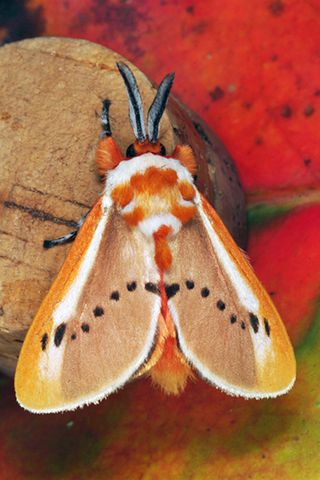

Light attraction works better on dark nights or in places where there is no competition with other In the last two cases, the light is only attracting the positively phototactic moths that happen to wander into the light source’s small sphere of influence during the night. Other trials in Germany in a region away from light pollution though, have shown that street lamps can attract moths only up to about 30–80 feet away. A classic experiment in 1978 by Robin Baker and colleagues at Manchester University suggested that most moths are attracted to light traps on the ground when they are only in the range of the light by just a few meters. It is still not fully known how far you can attract moths from using an artificial light source. Males are the more mobile sex anyway, and this hypothesis does not satisfactorily explain the attraction of females to light. The theory has not, however, gained much traction, because although males are more frequently attracted to light, it is known that pores on the moth sensilla are just the right size to detect pheromone molecules directly. His view was that UV light pumped moth female pheromone molecules in the air into an excited state, so they emitted photons of infrared microwave radiation that could potentially be detected by sensilla on the male antennae, that he postulated were the right size to function as waveguides. In the 1970s, Philip Callaghan developed the infrared theory of light attraction.

Moth traps are designed to exploit the inwards spiralling responses of moths, using suitably placed barriers (baffles) around the lamp that they can collide with, so that they will then fall down through a collecting funnel into the trap.


Most flying animals, in fact, tend to keep the lighter sky above them (they do not fly upside down!), and will therefore also dip down when closing in on an artificial source that they then confuse with the sky light. Moths are also affected by a general phenomenon known as dorsal light reaction. However, moths rarely exhibit such geometric trajectories, but rather take circuitous routes when coming to light, making loops and coils perhaps due to a compromise with escape responses or disturbance by wind plumes. However, whilst rays from a celestial source would all be seen as parallel, those from a lamp radiate all around.Īccordingly, a moth on the wing would constantly turn inwards to keep itself at a constant angle to the light, ending up in a spiralling path which would make it eventually collide with the lamp. A better theory is that moths can use the moon or stars to orientate, and that a moth adjusts its flying track to keep the light source at a constant angle to the eye. There have been a number of theories that try to explain this.Ī common theory is that moths are attracted to the moon, and therefore they should fly higher on moonlit nights. Insects, and especially moths, are particularly sensitive to the UV part of the electromagnetic spectrum. With the invention of ultraviolet (UV) lamps for medical purposes just before the WWII, it was discovered that sources rich in UV greatly increased moth attraction to light. However, some species like the Old Lady (Mormo maura) tend to be repelled by it (they are negatively phototactic). Most nocturnally active moths are attracted to light, a phenomenon known as positive phototaxis. The potentially fatal lure of the moth to the flame has long been a scientific mystery.


 0 kommentar(er)
0 kommentar(er)
